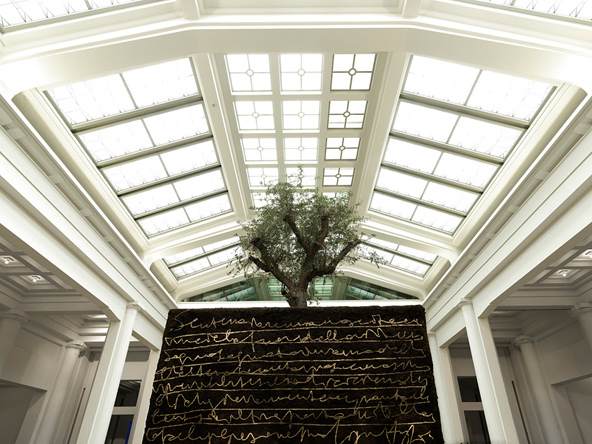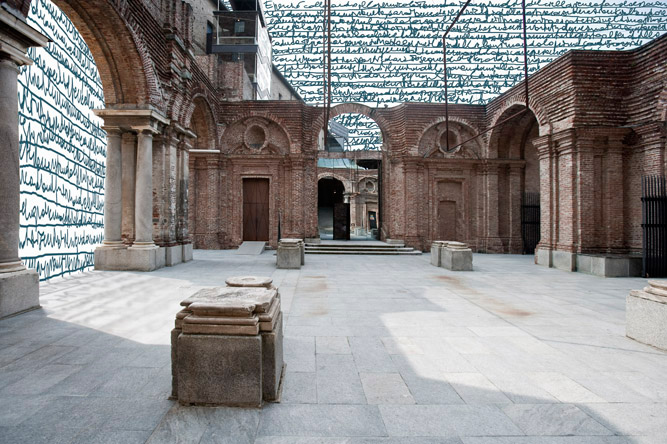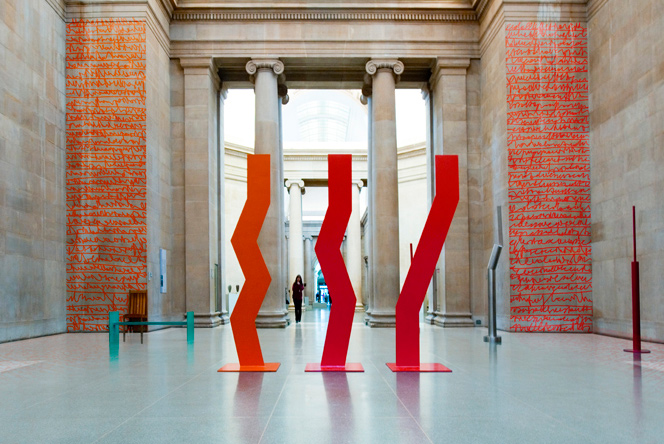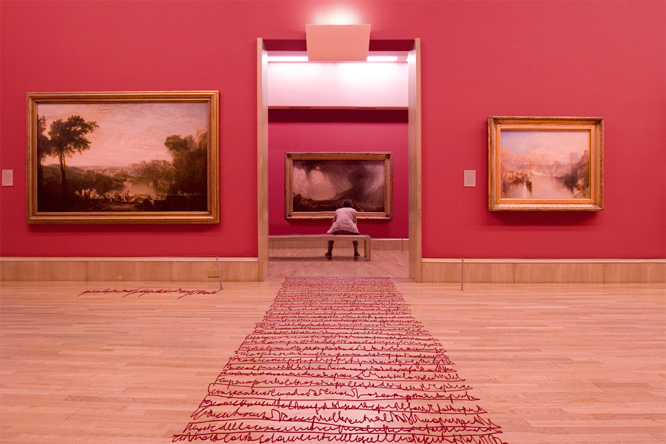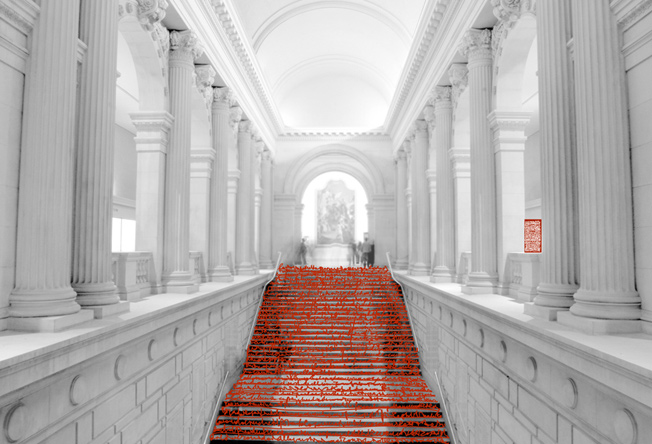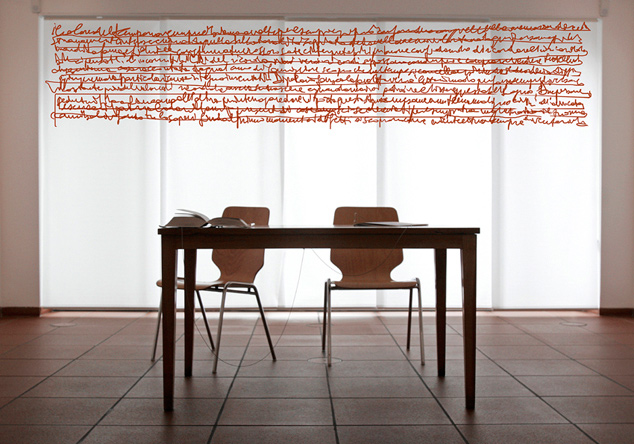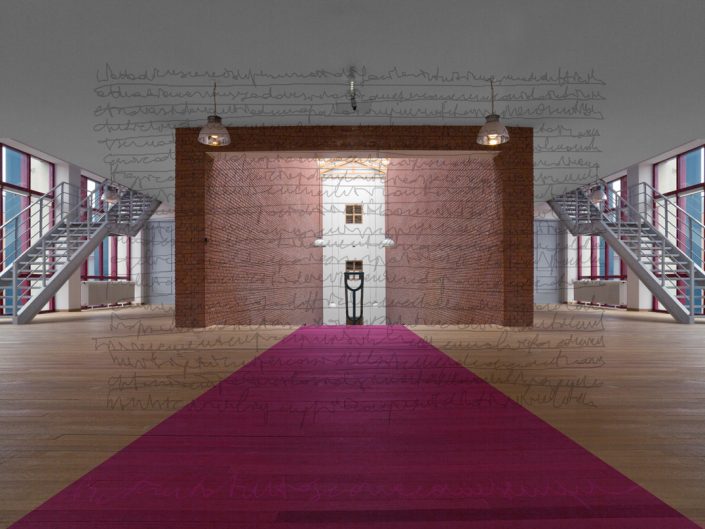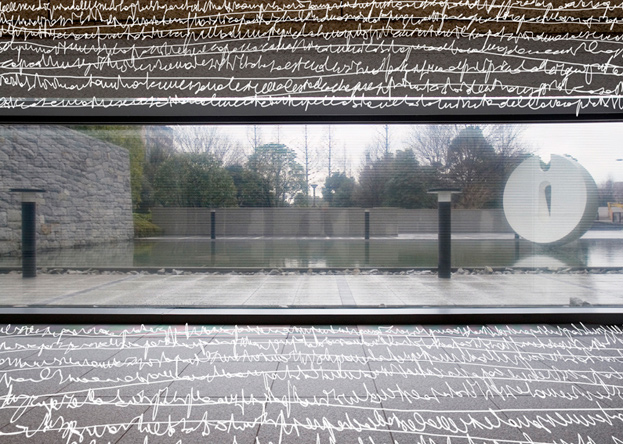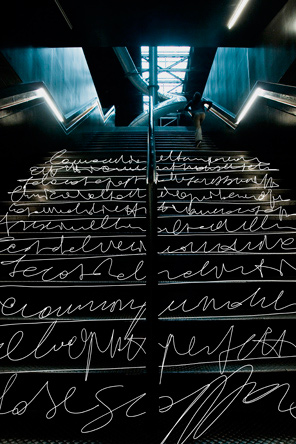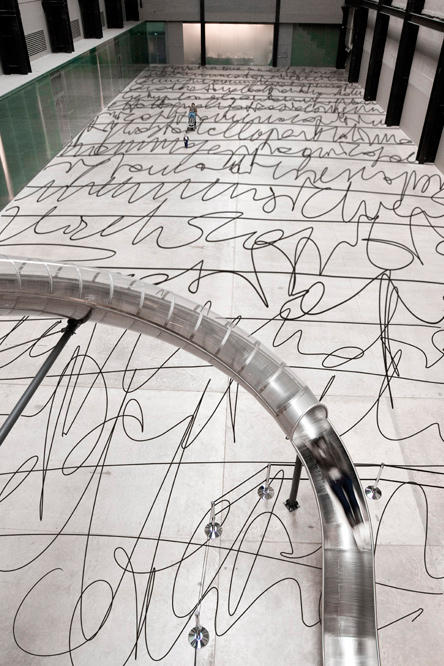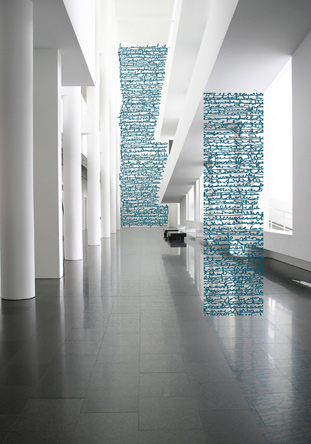SENSE OUT
A visual investigation of language
“Sense out” is the title of a research started in 2005.
The project explores language and how it is currently used by art museums, huge boxes of knowledge and history supposed to help people understand importance, meaning and content of art. The public must be willing to listen and participate actively in this lesson. This combination of events seldom takes place: people do not seem to understand the museum’s languages displayed. Through the use of a gestural writing that can not be decoded, Tomasinelli highlights the failure of the museum in conveying contents, due to a inconvenient, polished and self-referential language. And, on the other hand, the the lack of participation of every-day people in actively sounding the institution out.
The language becomes a meaningless sound for deaf listeners.
The writing that overlap the museums’ rooms becomes a metaphor for this failure of communication. Although the superimposed text has content, it end up losing it at the same time of this writing. The meaning is lost, therefore: Sense Out and, playing with the piedmont dialect , “sens aut” (without anything).
Read the catalogue here.
Inside language
Tiziana Conti
The Museum as a depository and custodian of artwork, but also a place of observation and comparison. The spectator as an active interlocutor, who meets the work at the museum venue and enters into a dialogue with it. Thus, an ideal state ensues, in which the work prepares itself to be “interrogated” hermeneutically, proposing hypotheses of a path to different levels of interpretation.
Photography and the Museum form a strong combination. Thomas Struth dedicates a series of works to this theme, focusing the point of view of an estranged mass; Candida Hofer emphasises perfect architectures, detached from reality; Karen Knorr shows the Museum as the place of comparison between tradition and social reality.
According to Max Tomasinelli, the Museum is a reference point suggesting a dual purpose, synchronic within the works of art, diachronic within the history of art. However, the spectator often observes in a “distracted” manner, his attention is superficial, fragmentary. If the work cannot be read immediately, only the surface of the impression remains. The Museum, then, becomes the site of rapid consumption, the same as any object, and the work seems a fetish.
Inevitably the discussion moves to language and to the means of communication. Linearity, uniformity, horizontality, velocity characterise the language of the media, of advertising, of technology. Communication becomes standardised and flat; it holds no surprises, nor arouses curiosity. Just an empty, ghostly façade, which causes bewilderment. In the words of Jean Baudrillard, communication is now “reduced to appearance, an ingenious script that has bewitched the language inside a phantasmagoria”.
The photographic objective of Tomasinelli is insinuated in this torn fabric: the Museum thus becomes the place of non-communication. The images dwell on the architectures of famous museums, such as the Ludwig Museum in Cologne, the Fundacio Tapiés in Barcelona, the Brühl Museum, at times even modifying the morphology, superimposing or inserting fragments of writing on doors, staircases, walls, on the pane of glass dividing two areas, or indeed inventing an imaginary supporting wall.
The writing, displayed in different colours that satisfy perceptive requirements, is born from the “manufacturing intention” of the author, and is characterised by indecipherability. The letters are written by a story-telling hand, flowing feverishly, without pausing, without punctuation, without running out of thought, triggered by the memory of the place and of the situation, in a way that is never definitive, as occurs even in the chaos of the original language. The silence lingering inside the museum exalts the absence.
It also alludes to the magma of a communication that has engulfed itself into a short circuit. Where a phrase “Don’t open this door” is seen, this indicates a prohibition, from opening a door, a metaphor of the inability to proceed in knowledge beyond the symbolic remains.

